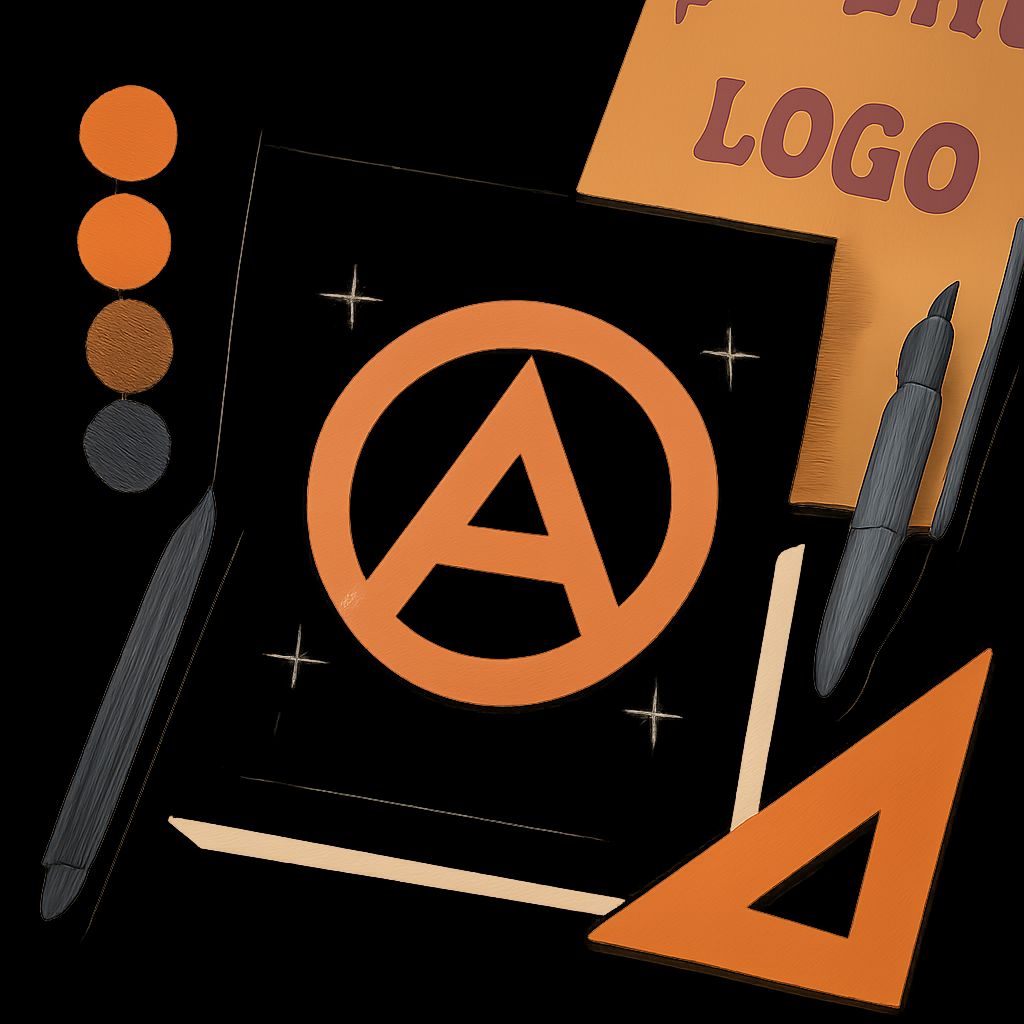The Importance of Logo Design in Branding
Logos are a critical component of brand identity, serving as visual shorthand for the company and its values. An effective logo is not just an image but a statement that communicates the essence of a business to its audience. In today’s competitive market, creating a memorable and iconic logo is essential for brand recognition and success.
The process of designing a logo involves understanding the brand’s mission and values and translating these into a visual format that resonates with the target audience. A well-designed logo can create an emotional connection with consumers, inspire trust, and differentiate the brand from competitors. Logos act as the face of the brand, playing a pivotal role in building customer loyalty. With the digital landscape continuously evolving, the need for adaptive logos that can maintain their impact across various platforms is more vital than ever before.
Key Principles of Logo Design
Creating a successful logo requires adherence to several essential design principles. One of the most important principles is simplicity. A simple logo is easy to recognize and remember, making it more effective for branding. Consider some of the world’s most iconic logos, such as Nike’s swoosh or Apple’s apple; their simplicity contributes to their enduring appeal.
- Memorability: A logo should be distinctive and easy to recall. This is crucial in distinguishing a brand in overcrowded markets where consumers are bombarded with countless images daily.
- Relevance: It should reflect the brand’s core values and mission. A relevant logo ties into the company’s ethos, ensuring customers can see the connection immediately between what the brand stands for and what it visually represents.
- Versatility: The logo should be scalable and work well in various contexts, whether on a website or a business card. It must retain clarity and power regardless of where it’s placed or how it’s used.
Another key principle is versatility. A logo must be adaptable to different formats and applications, maintaining its effectiveness regardless of size or medium. This includes considering how the logo looks in black and white, on mobile devices, or in print. The ability to reproduce across various applications without losing quality or meaning is essential in a world that demands multi-channel presence.
The Role of Timelessness in Logo Design
While trends come and go, a timeless logo stands the test of time. Consider Coca-Cola’s logo, which has remained relatively unchanged since its creation. Such a logo doesn’t just survive fleeting trends but thrives across different eras, consistently connecting with its audience. Timeless logos reinforce brand stability, suggesting reliability and longevity—key attributes customers look for in brands they commit to over long periods.
The Logo Design Process
The process of designing a logo typically involves several stages. Designers begin by conducting thorough research to understand the brand’s identity, target audience, and competitive landscape. This stage often involves creating mood boards and collecting inspiration from various sources. In this exploration phase, designers immerse themselves in the brand’s world, identifying themes and symbols that could be visually interpreted. Such an approach ensures the crafted logo aligns perfectly with strategic business objectives and audience expectations.
- Research: Understanding the brand and its context is crucial in the initial stages. This involves market analysis and an in-depth exploration of the brand’s unique selling propositions and audience demographics.
- Concept Development: Brainstorming and sketching ideas to encapsulate the brand’s essence. Here, creativity meets strategic thinking, as designers translate abstract concepts into tangible design elements.
- Refinement: Narrowing down the options and refining the design based on feedback. This involves critically evaluating the draft logos for elements like balance, symmetry, and overall alignment with brand values.
Once the research is complete, the next stage is conceptualization. Designers sketch out multiple ideas before narrowing down to a few strong contenders. These initial concepts are then developed further, with feedback from stakeholders shaping the ultimate design choice. Designers often use software tools to create precise digital versions of their sketches, experimenting with color palettes, typography, and layout to refine the final design. Throughout this iterative process, constant collaboration with stakeholders ensures the design stays true to the brand vision.
Common Challenges in Logo Design
Logo design is not without challenges. One common issue is avoiding cliches and staying innovative. In a world saturated with similar design elements, standing out while being true to the brand can be daunting. Furthermore, ensuring that the logo appeals across different cultural contexts can be tricky, particularly for brands with a global audience. Designers must balance creativity with strategy, ensuring their work does not inadvertently alienate or offend any potential consumers.
Colors and Typography in Logo Design
Another significant aspect of logo design lies in the intelligent use of color and typography. Every color evokes specific emotions and reactions, which can significantly impact consumer perception. For instance, blue often represents trust and professionalism, ideal for corporations, whereas green exudes vitality and environmental consciousness.
Typography also plays an essential role. The font choice should reinforce the brand’s character; a playful font might work for a children’s toy company but would seem out of place for a law firm. The synergy between color and typography must be harnessed effectively to enhance the logo’s message and drive consumer connection.
FAQ
How long does it take to create a logo?
The duration can vary depending on the project’s complexity, but typically, the process can take anywhere from a few weeks to several months to refine the logo into its final design. Factors influencing this timeframe include initial research, the number of concept iterations, the extent of stakeholder input, and necessary revisions.
What makes a logo stand out?
A distinctive logo includes unique design elements that can set a brand apart from its competitors, ensuring it is memorable and easily recognizable. Features like an unexpected color palette, creative use of negative space, or a singular font can elevate a logo from mere design to a compelling brand signature.
How much should a logo design cost?
Logo design costs can vary greatly depending on the designer’s experience and the project’s scope, ranging from a few hundred to several thousand dollars. Investment in a quality logo can yield substantial long-term dividends through increased brand recognition and loyalty.
Do logos need to be trademarked?
While not mandatory, trademarking a logo provides legal protection and helps safeguard your brand’s visual identity against unauthorized use. A registered trademark can deter other companies from using or imitating your logo, offering peace of mind and reinforcing brand integrity.
The Future of Logo Design
With technological advancements and changing consumer behaviors, the future of logo design is poised for dynamic evolution. Designers now leverage digital tools that use AI and machine learning to predict trends and consumer preferences. As brands increasingly cater to mobile-first audiences, there’s a growing emphasis on fluid logos that adapt seamlessly across digital platforms while retaining core design elements. The vitality of logo design lies in its ability to fuse art with strategy, ensuring brands can forge strong, lasting relationships with their audiences through visually compelling, innovative identities.




